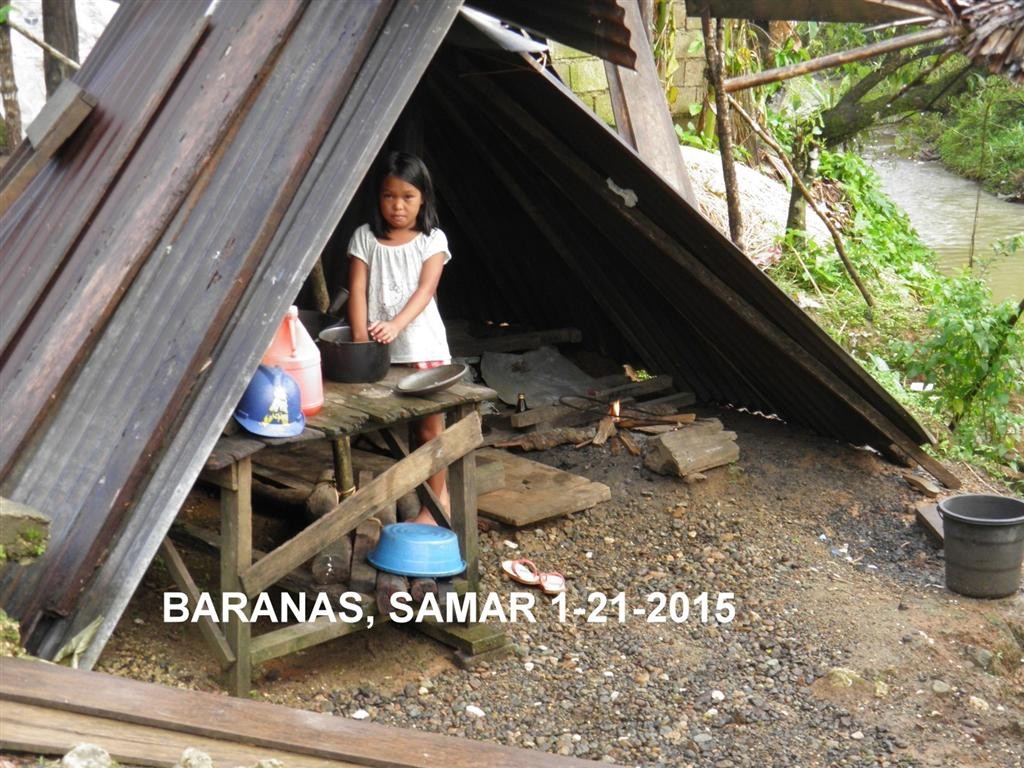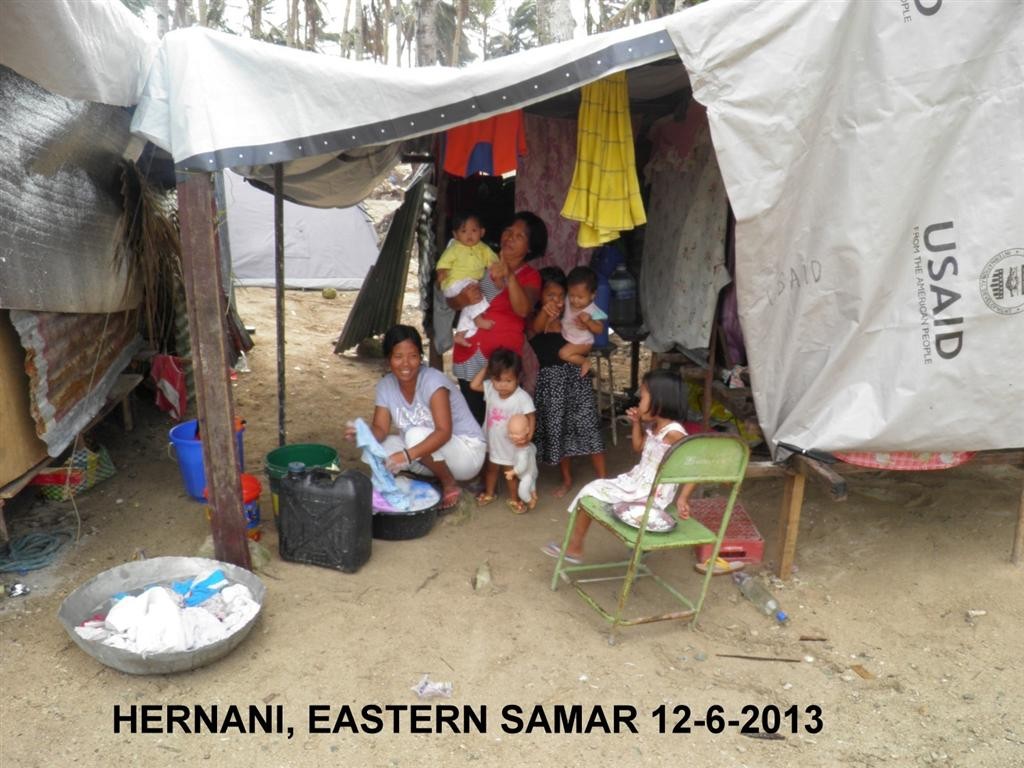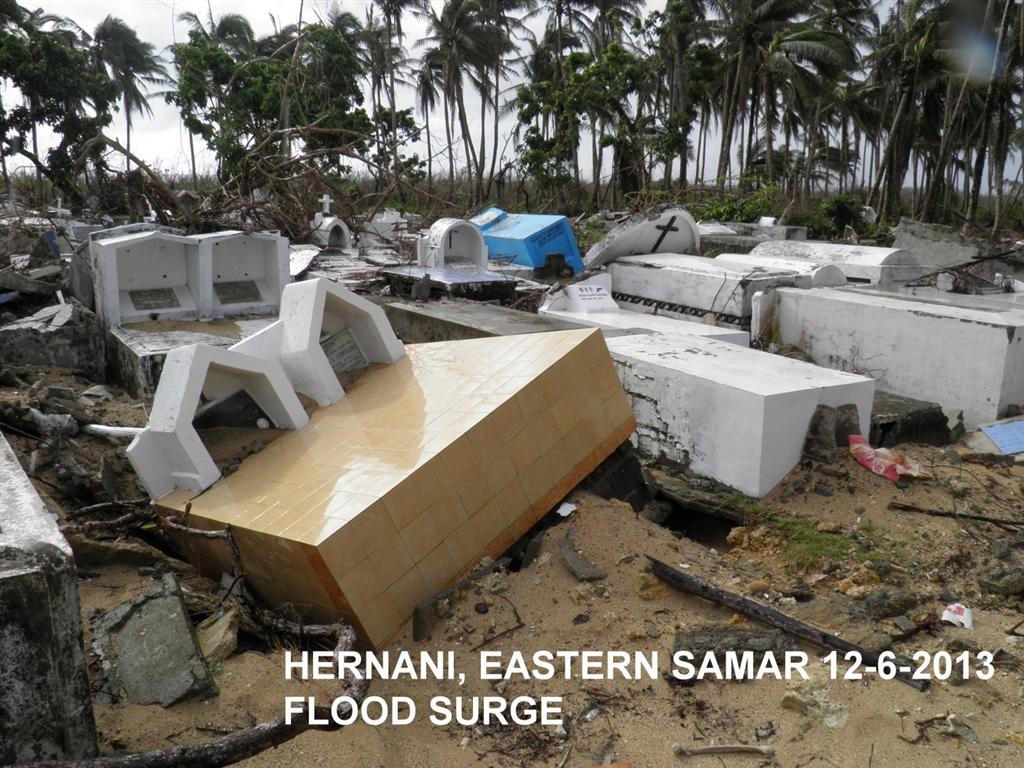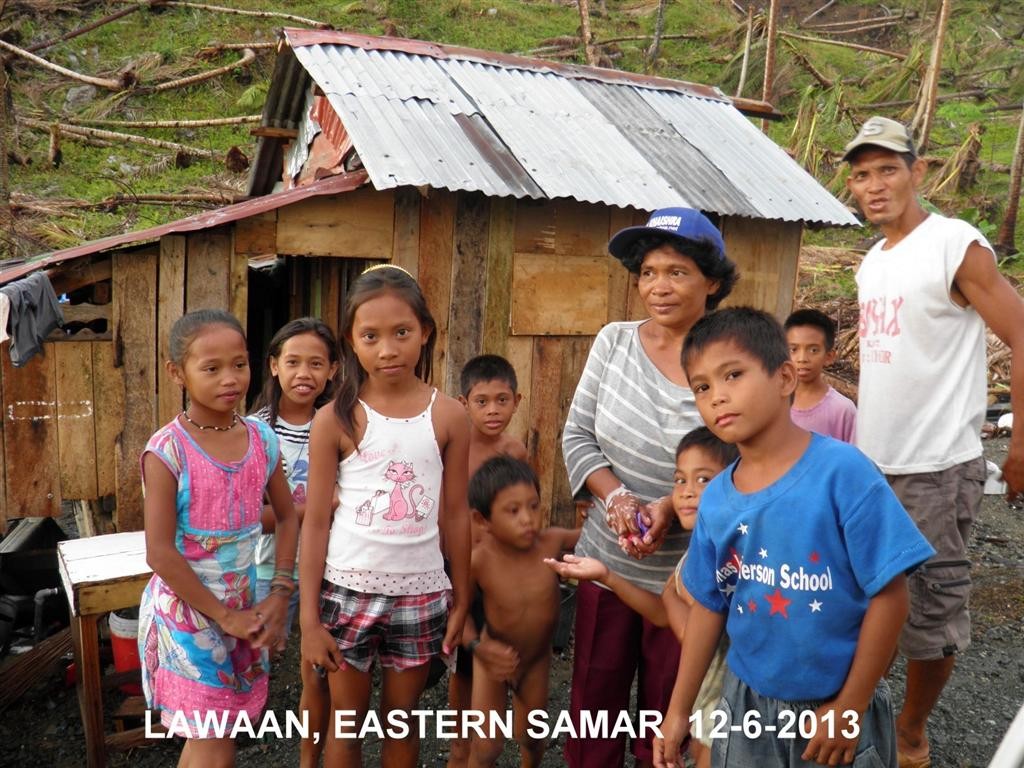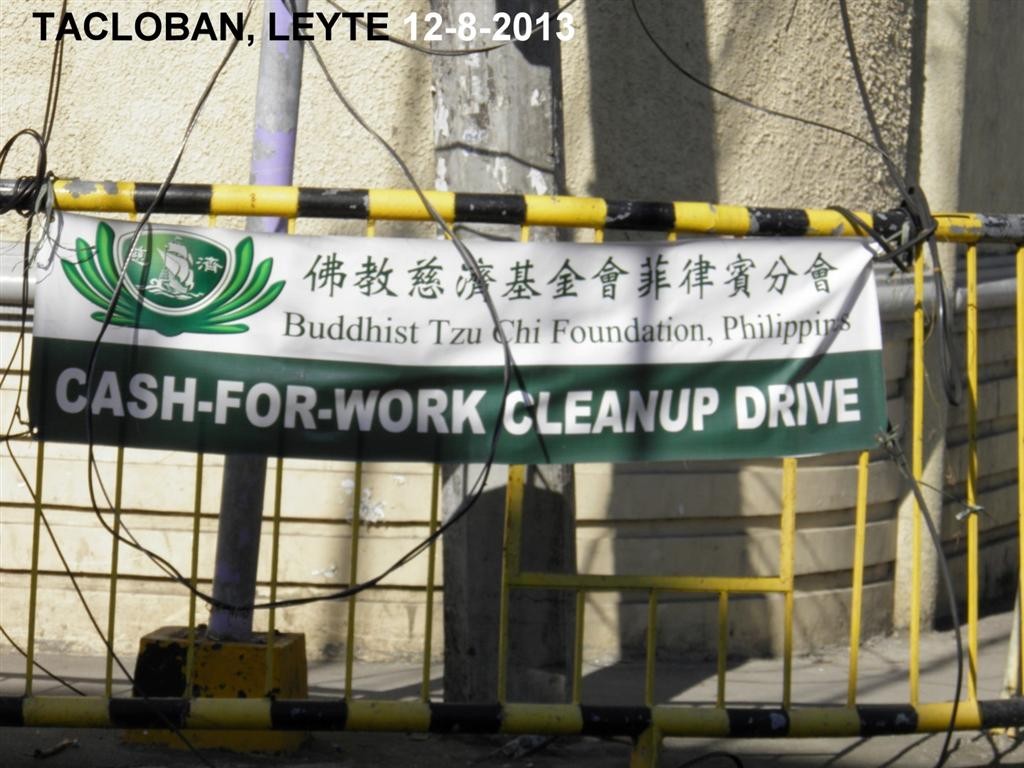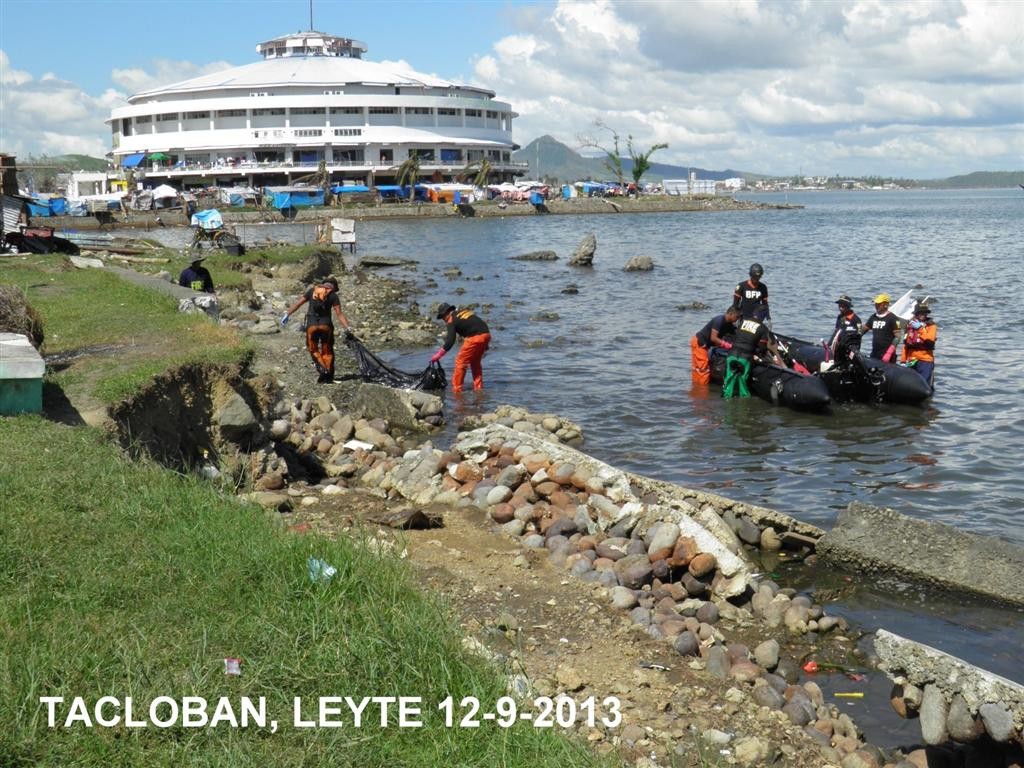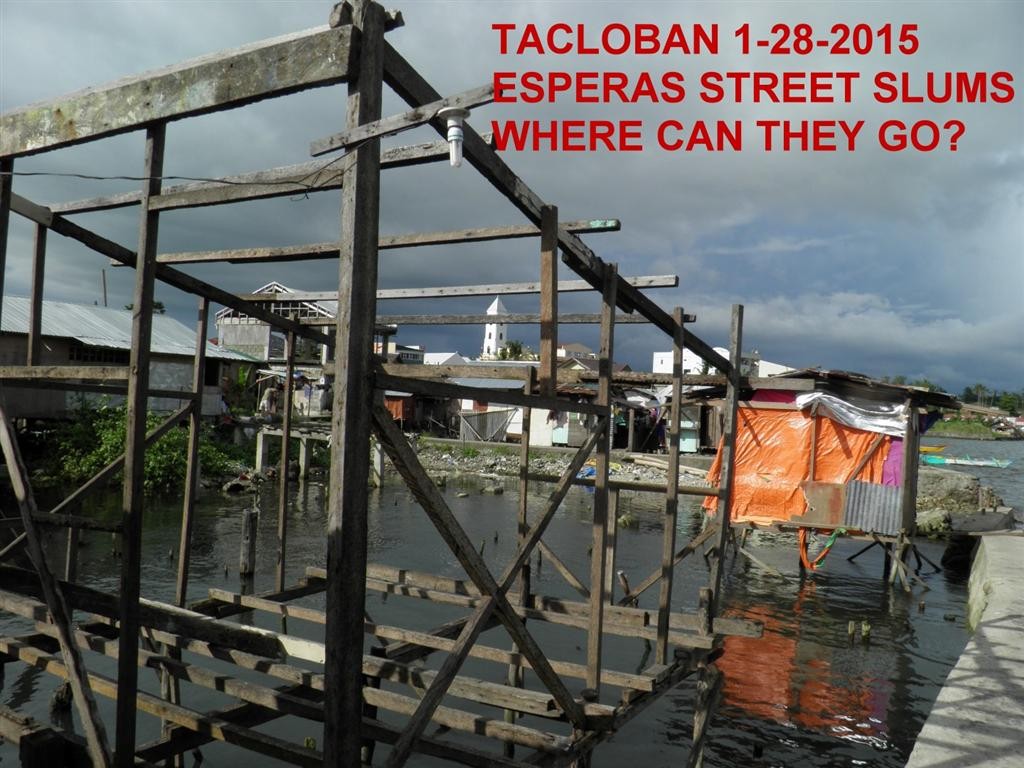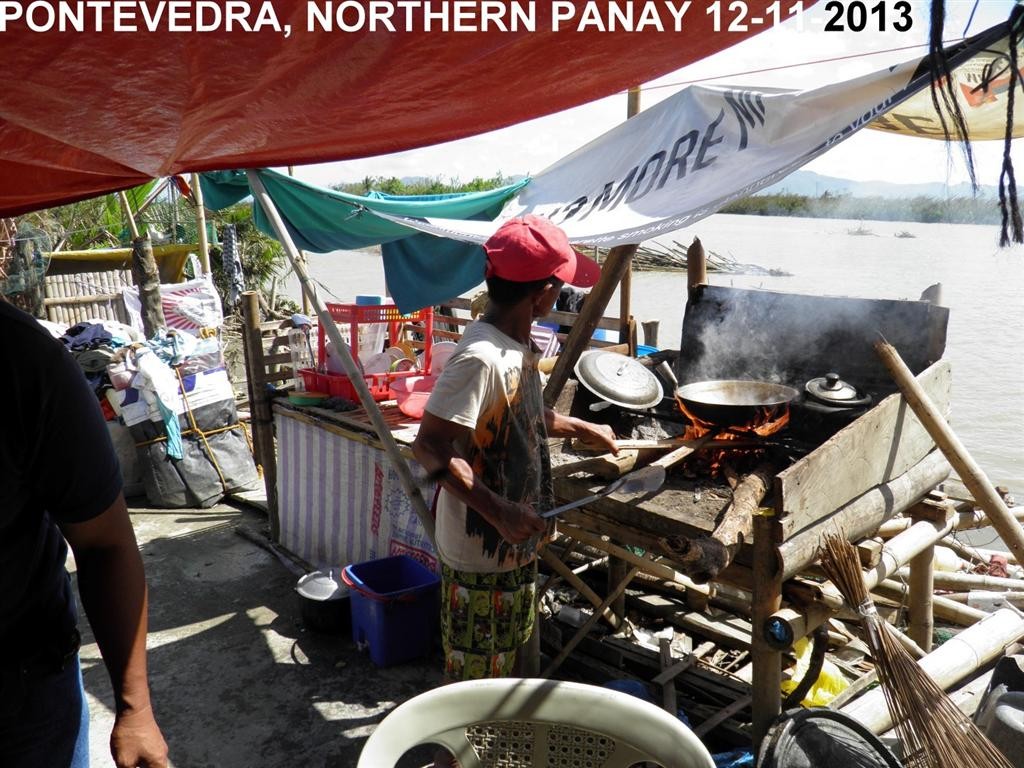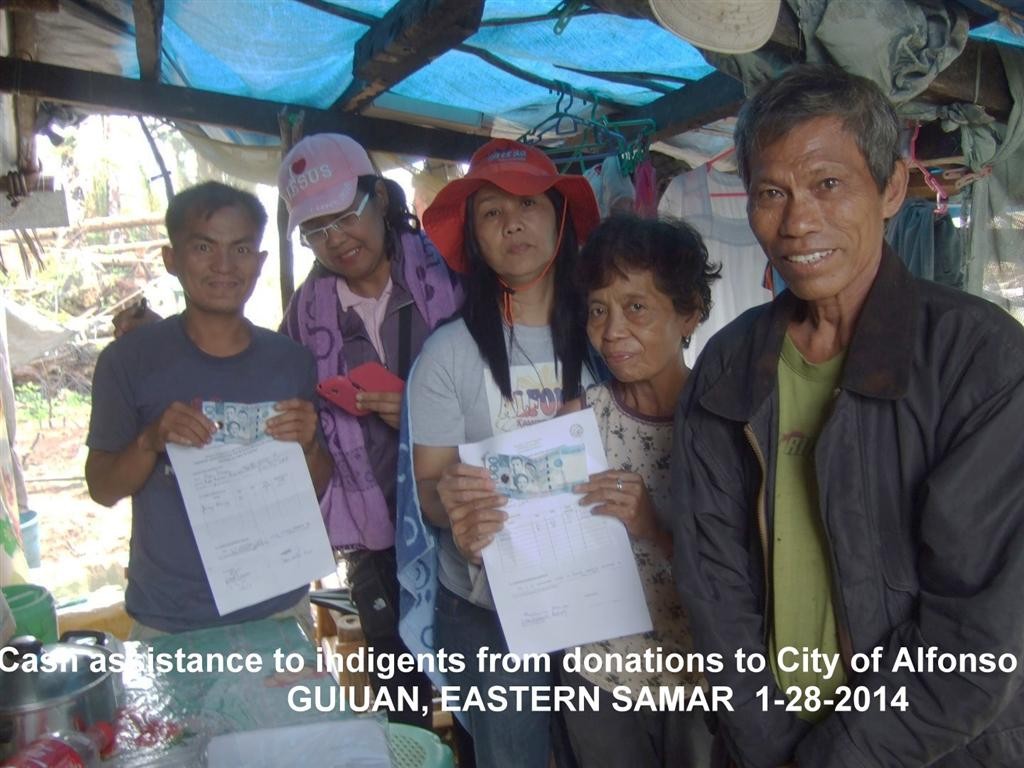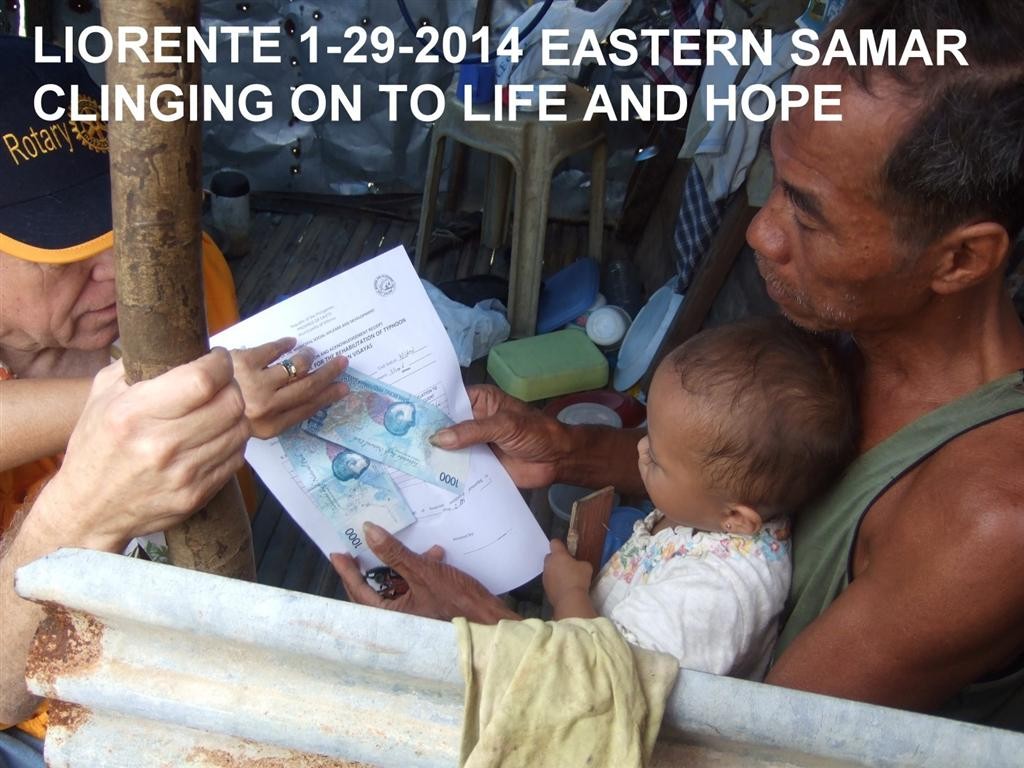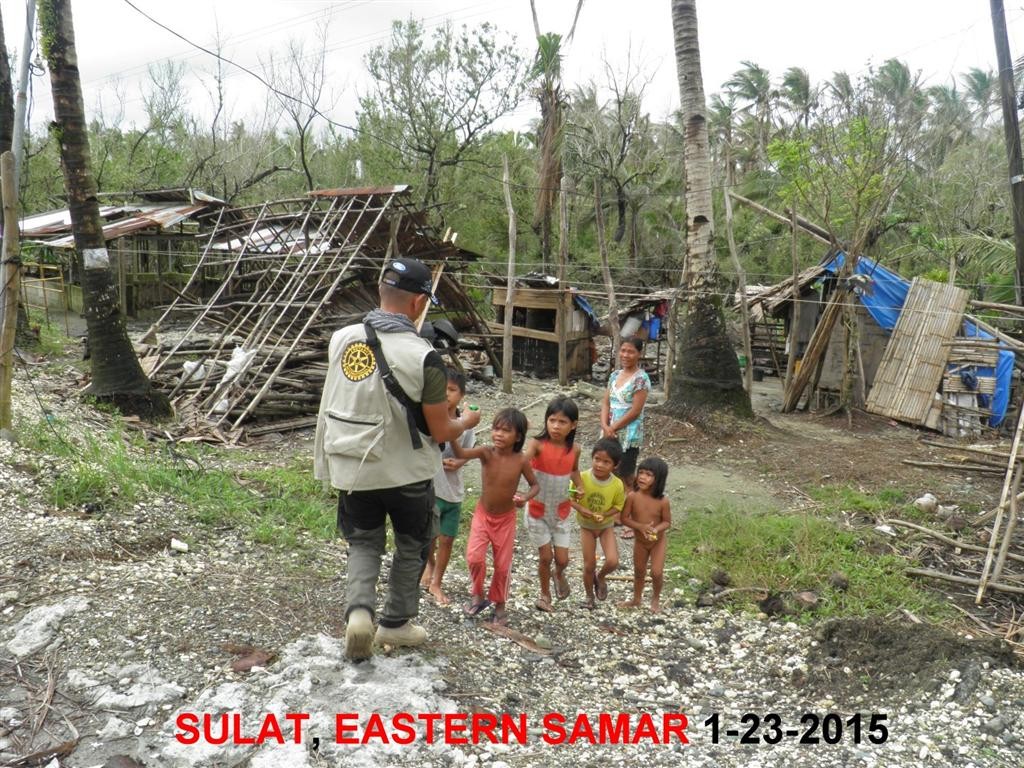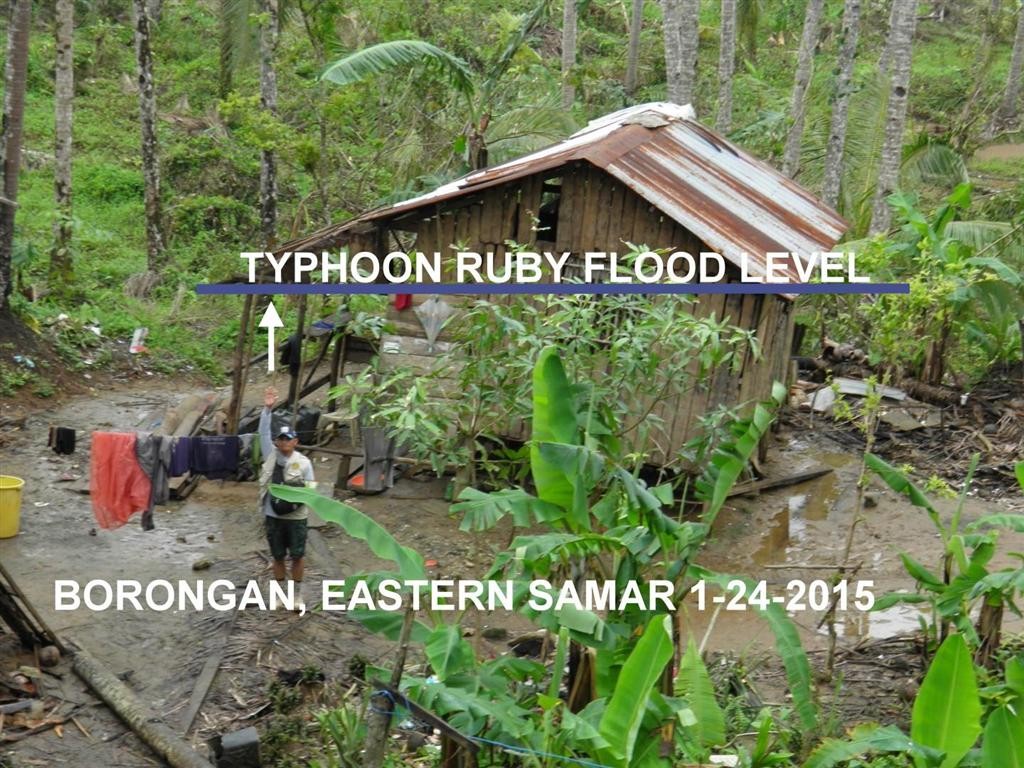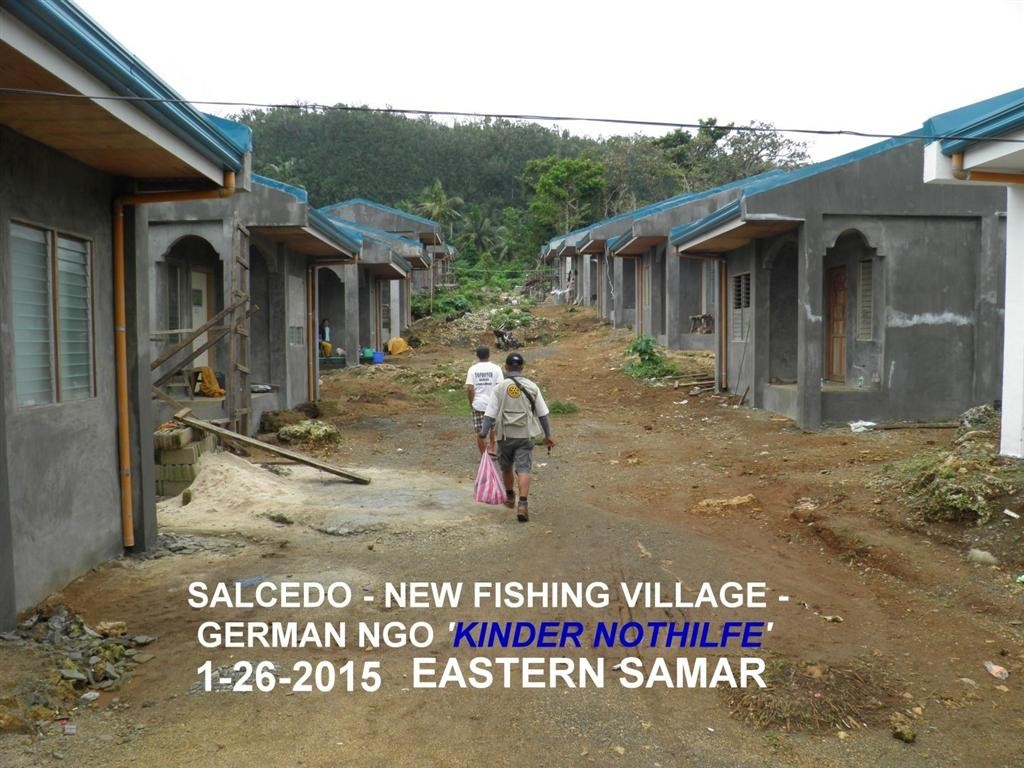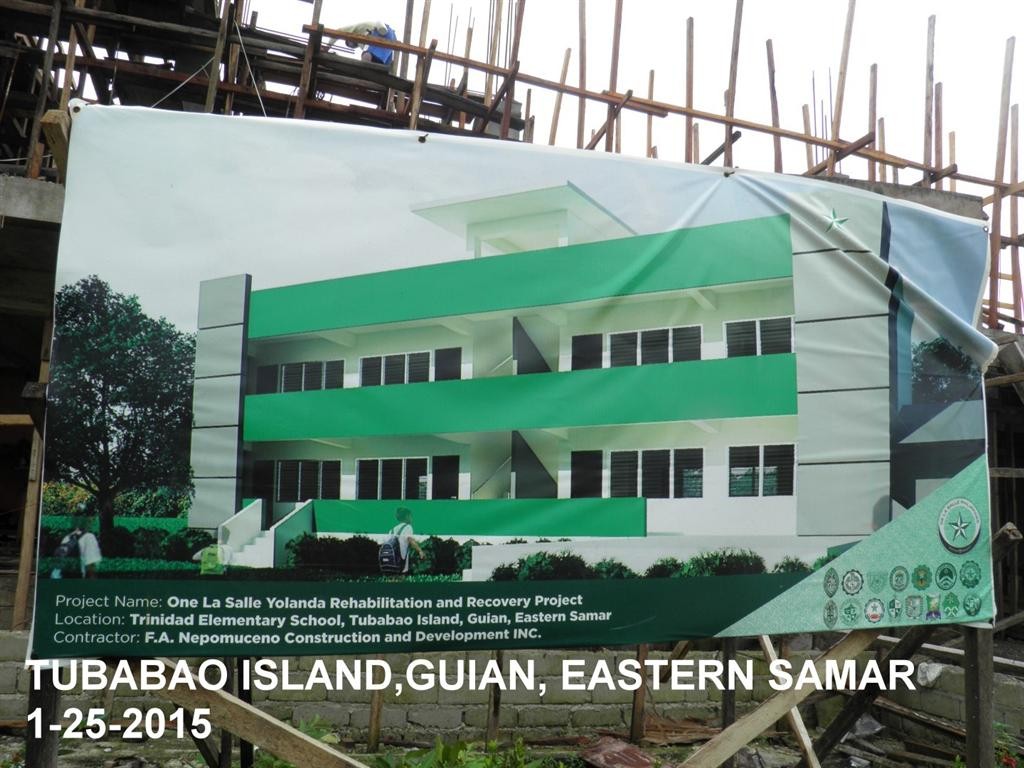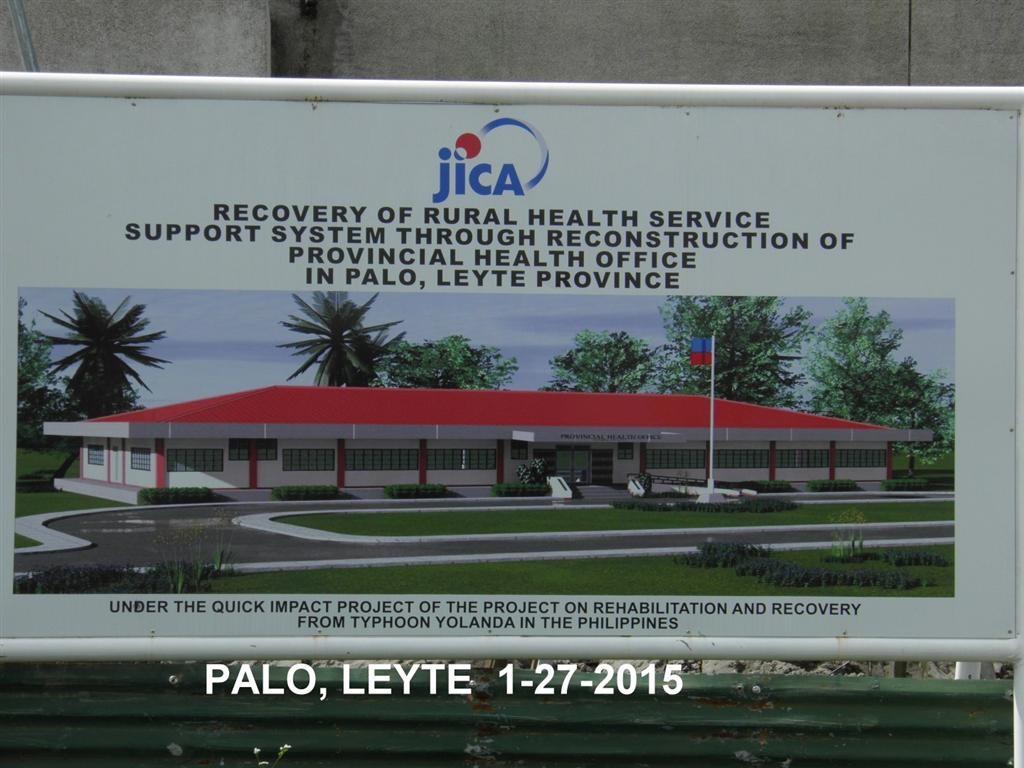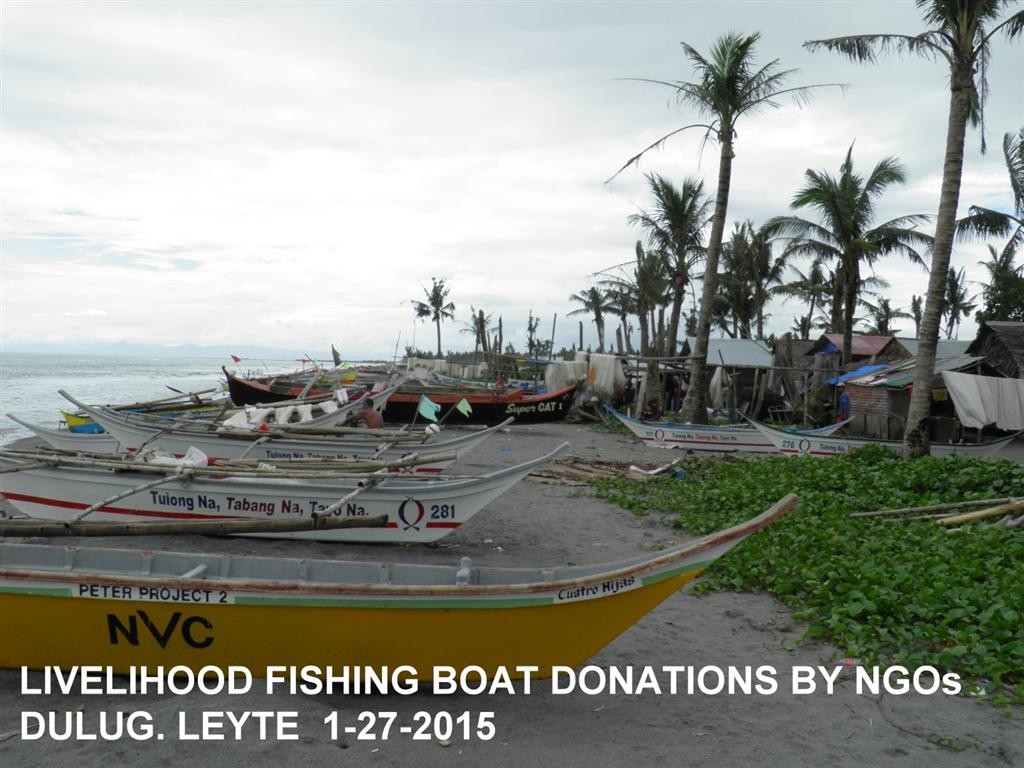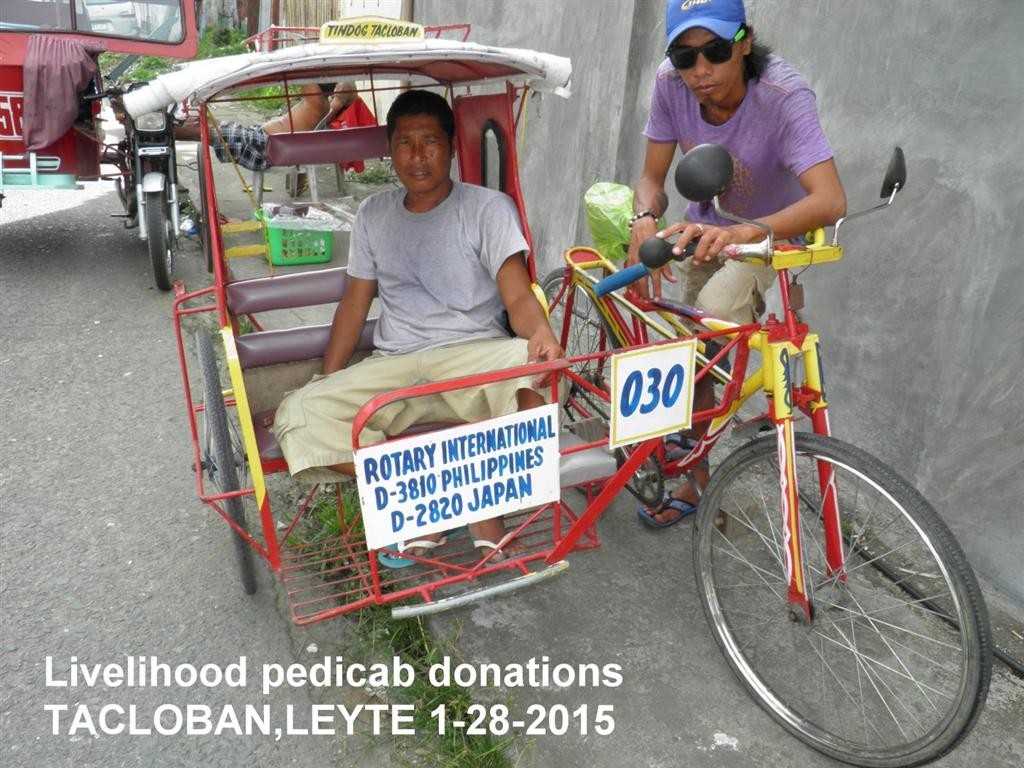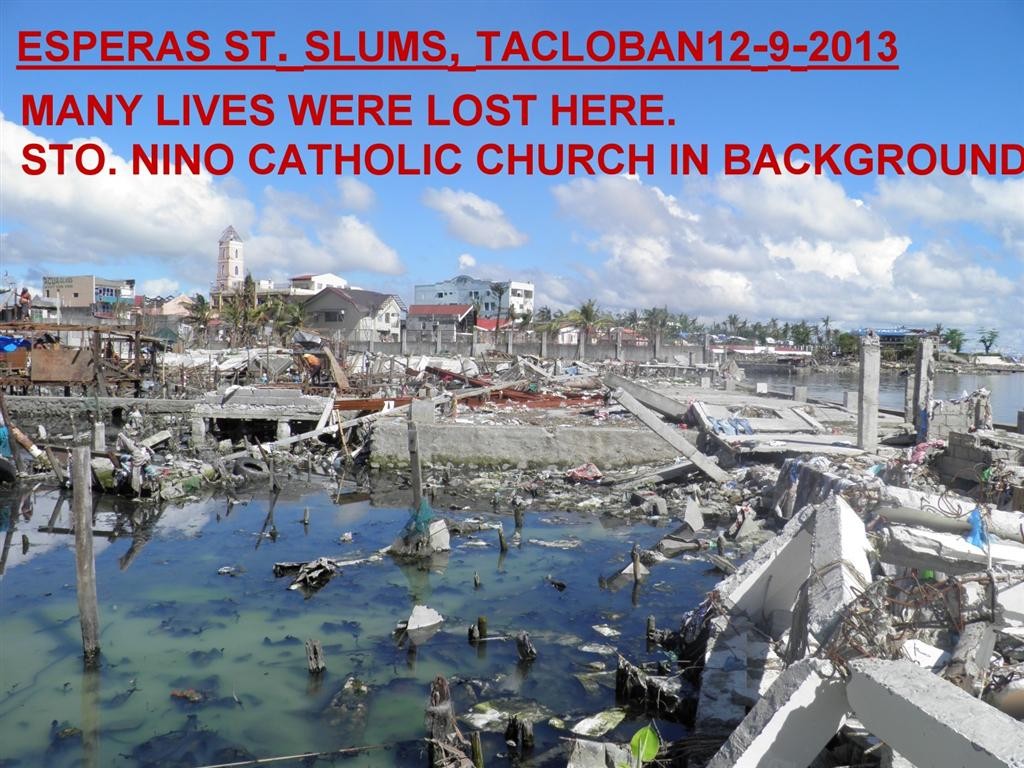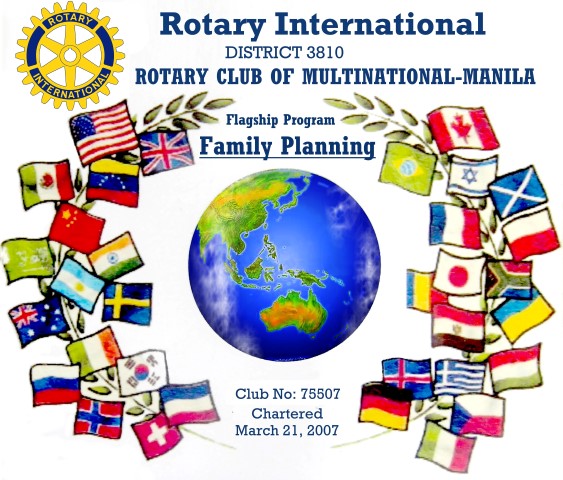Family Planning, Humanitarian Assistance, Disaster Mitigation Research
The club’s flagship program is and will continue to be family planning as it not only addresses critical women and family health issues but actually all six areas of Rotary’s focus. However, because of the dire need of the poor and destitute throughout the country, humanitarian assistance resources will also always be extended to them, especially to the women and children who are the true victims of this ever-expanding whirlpool of poverty caused by the still runaway population explosion that was historically fueled by the patriarchal and agricultural-based mindset of the people. Its strong downdraft has become a vortex that sucks newborn into seemingly endless cycles of poverty.
The three “boots on the ground” support trips to the typhoon-belt-stricken areas as indicated on Map 1 largely focused on Samar and Leyte and were based on this philosophy. Immediate cash and basic needs infusion was provided with the support of overseas supporters and cooperation of local NGO’s (non-governmental organizations) and local public agencies. Basic family planning and disaster mitigation research was also conducted at the same time to gain a better understanding of the most effective ways to assist now and in the future.
We must acknowledge that the population explosion largely remains unchecked despite the efforts of the government after the passage of the Reproductive Health bill. It needs massive hands-on cooperation from everyone and science-based education focused on critical thinking to reign in this root cause of poverty, hunger, disease and despair. If successful, it will create and sustain healthy family units that guarantee the right of women for self-determination and protect children from sexual abuse inclusive of rape and incest. But it will also require proper nourishment of pregnant mothers, babies and young children during the early development stage so that they are not handicapped with mental and physical development impairments as witnessed almost everywhere.
It is a fact that during the last five years the population in the Philippines increased on an average of 1.7 million per year. If this rate would remain constant another 63 million would largely be born in extreme poverty between 2013 and 2050. Based on the latest gradual reduction in live birth over the years (presently at about 2.9%), it is expected that this can be reduced to 50 million people or hopefully less. To presently achieve this seemingly unreachable goal of putting even a dent into the rapid population explosion would require an immediate average reduction of live birth to about 1.35 million per year or to even less than 1 million per year in future years based on the present still high birth rate of 1.7 million per year. An attempt to reduce the population explosion to “just” 40 million by 2050 would require almost immediate teamwork from all sections of society. However, this was not evident anywhere and is still based largely on wishful thinking despite the dedicated efforts of individual health workers and doctors. For it to be achieved, the still-strong patriarchal social system in less developed, largely agricultural areas and religious ideologies have to become more tolerant of women and their needs.
In 1950 the Philippines had a population of about 18.6 million people. By the end of 2015 or 65 years later the population will have increased by another 90 million. Paradise lost? President Aquino already questioned after Typhoon Yolanda if the Philippines had become a nation of beggars. Even Pope Francis, who is aware of the extreme poverty in the Philippines and who probably is also aware of these stark statistics, implored Filipinos “not to reproduce like rabbits” during his farewell speech on his flight home to Rome after his January 2015 visit to the country.
Pertaining to disaster mitigation the question has not been answered as to where can people safely live? It is not a matter of life and death and body counts after a disaster but of being able to live a normal life. For the rich the answer is fairly simple. Almost everywhere if one has the financial resources to own land and build typhoon- and earthquake-safe structures, it can readily be done. For the poor and destitute and those that will be born into the seemingly ever-expanding whirlpool of poverty the answer is simple: there is no way to escape. Natural disasters and flooding are a way of life in the Philippines and will keep the country in constant poverty despite the never-ending support of the UN, overseas and local govern-ment agencies, and NGO’s.
As far as medical support is concerned it is just a fact of life that if you are poor you will die earlier, in greater pain and suffering from infirmities not being attended to. Municipal and provincial hospitals are often understaffed and in dire need of medical supplies and equipment that is largely furnished after disasters through foreign aid. Many dedicated health care professionals on the front lines attempting to carry out meaningful family planning are still often hampered by lack of support and often religious-based misrepresentation as to their meaningful aims. Among the many unsolved problems remains the exploding teenage pregnancy bred by poverty, especially in the typhoon-ravaged areas. Without a true safety net a whole new cycle of extreme poverty is being created.
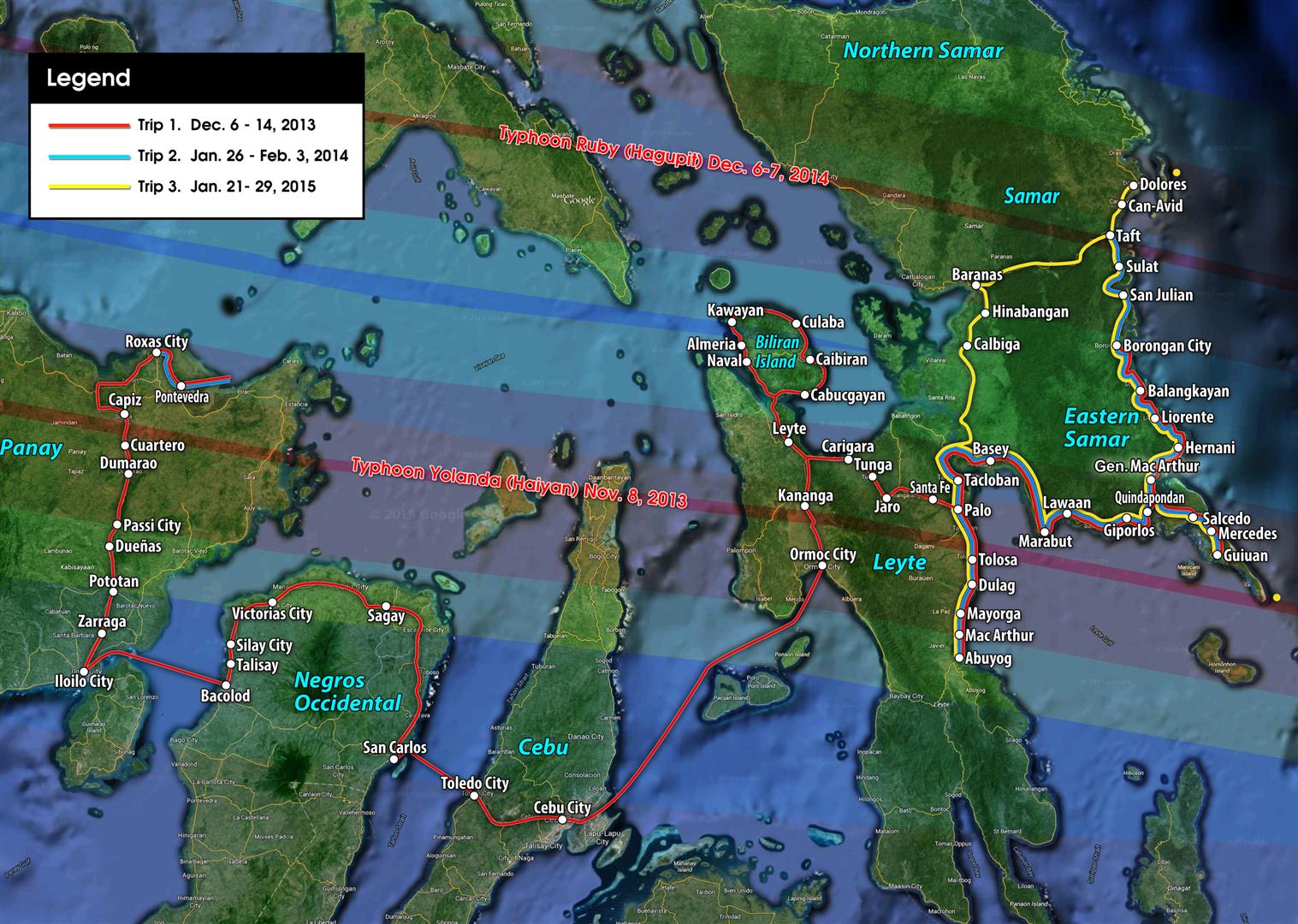 Traveling through the typhoon-belt areas we were told on many occasions that the typhoons may have been a blessing in disguise because they brought in out-of-town resources that were never available before. Much greater medical support such as ambulances, equipment and supplies are available largely from overseas that provide much-needed life lines even if they often do not reach the very poor. Medical facilities, hospitals and schools are being rebuilt, also largely with the support of foreign countries or their nonprofit foundations. Solar electricity for some of the often densely populated islands is a further example. Most impressive (and perhaps the most costly reconstruction for the number of people benefiting) was the building of a whole new village in Salcedo where a fishing village was ravaged by Typhoon Yolanda’s flood surge. Located in the hills overlooking the Pacific Ocean and out of the reach of any flood surge or future global warming, Kinder Nothilfe, a nonprofit organization based in Germany, is building 86 new concrete homes in a more typhoon-proof setting. Each house has two bedrooms, toilet, kitchen and balcony. The construction by De La Salle University of a more storm and flood surge-proof Trinidad Elementary School in Tubabao Island, off Guiuan in Eastern Samar, elevated several feet above the surrounding terrain, is another example. It, however, will still be susceptible to extreme storm surges as well as the rising ocean brought about by climate change.
Traveling through the typhoon-belt areas we were told on many occasions that the typhoons may have been a blessing in disguise because they brought in out-of-town resources that were never available before. Much greater medical support such as ambulances, equipment and supplies are available largely from overseas that provide much-needed life lines even if they often do not reach the very poor. Medical facilities, hospitals and schools are being rebuilt, also largely with the support of foreign countries or their nonprofit foundations. Solar electricity for some of the often densely populated islands is a further example. Most impressive (and perhaps the most costly reconstruction for the number of people benefiting) was the building of a whole new village in Salcedo where a fishing village was ravaged by Typhoon Yolanda’s flood surge. Located in the hills overlooking the Pacific Ocean and out of the reach of any flood surge or future global warming, Kinder Nothilfe, a nonprofit organization based in Germany, is building 86 new concrete homes in a more typhoon-proof setting. Each house has two bedrooms, toilet, kitchen and balcony. The construction by De La Salle University of a more storm and flood surge-proof Trinidad Elementary School in Tubabao Island, off Guiuan in Eastern Samar, elevated several feet above the surrounding terrain, is another example. It, however, will still be susceptible to extreme storm surges as well as the rising ocean brought about by climate change.
Self-help, where feasible, was also evident. For example, in Hernani some fisher folks and farmers had relocated their permanent homes in the hills out of the reach of any storm surge and flooding. However, because of the population density and the lack of property ownership, such options are available to only a few even with long-range planning by government agencies. A meaningful long-term disaster miti-gation vision must therefore factually address the ever-expanding cycle of poverty caused by the still-runaway population explosion. Local NGO’s, in cooperation with their overseas sponsors, in addition to providing emergency shelter and food, have the moral responsibility of stepping up and assisting in reigning in the population explosion, not just accepting seemingly never-ending assistance for the ever-increasing population.